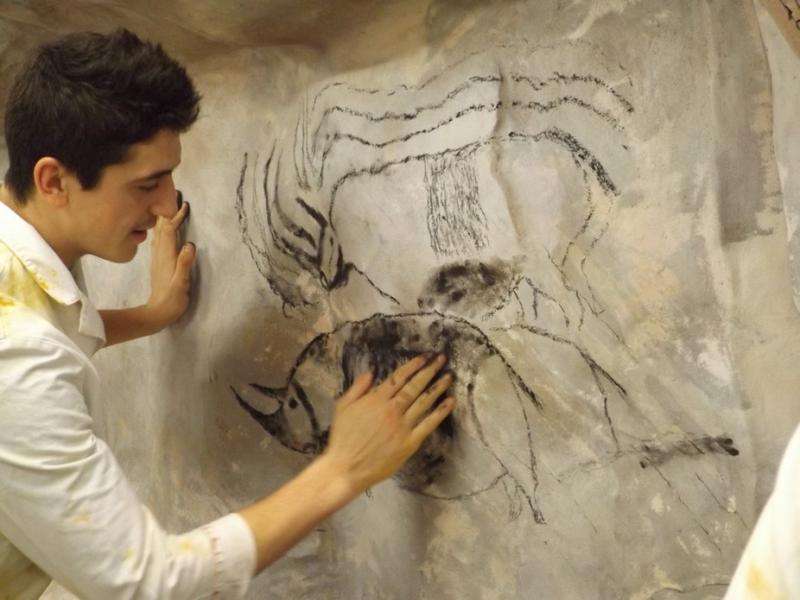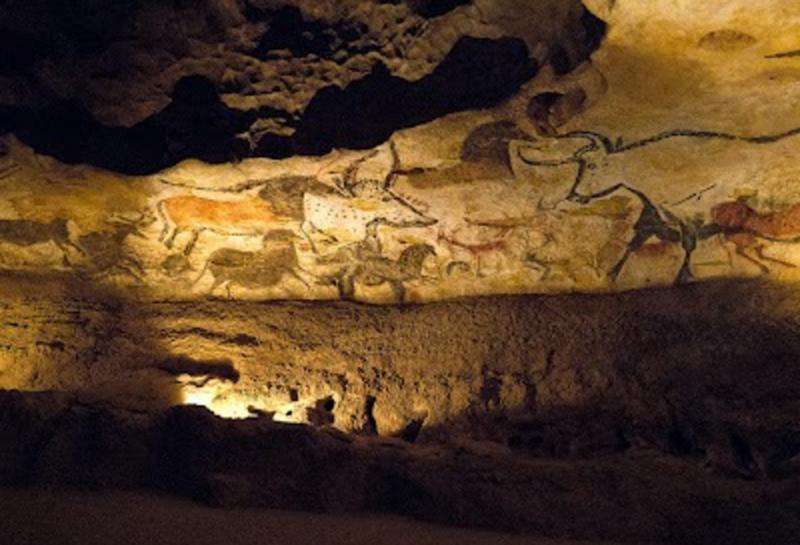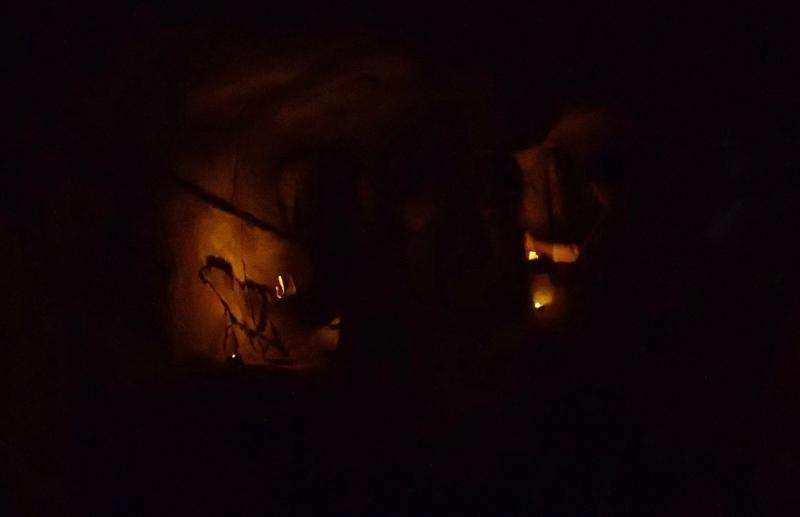Researchers build artificial cave to teach students about ancient art

There are hundreds of books with illustrations of the earliest human artworks. Images of bison, mammoth, lions and horses from famous cave sites like Chauvet, Lascaux, Altamira and Rouffignac shine out from these pages.
Such photographic images are the most common way through which people encounter the first representational art.
To see these images in their original setting, however, is a very different thing. It's no simple matter, though: the most famous sites have been closed for decades since it became apparent that the influx of visitors changed their delicate natural environment and degraded their images. So how can students get access to this representational art?
At the University of Liverpool, we decided that if our students couldn't get to these caves, we'd bring the caves to them. That's what prompted us first to teach students to replicate representational art themselves – and then to build an artificial cave environment in the university's Central Teaching Laboratories.
These processes, outlined in research we've just published in the Journal of Archaeological Science, illustrate the value of an experimental approach to the study of ancient human crafts.
It is only through detailed and scientifically controlled experiment that we can control enough of the natural variability to investigate many of the most problematic yet interesting questions about past human lives.
Different time, different light
In their original cave environments, images are neither flat nor evenly lit as they are in books. They are not planted immediately in front of your eyes. Instead you must look up or down or through gaps to catch a glimpse.
The images themselves are topographically rich. They use natural undulations of the rock surface to lend depth to their representation.

The animal fat lamps of the time cast just small pools of light. The temperature of this light also transformed the painted colours to the human eye. The beautiful panoramic photos of cave art discovered in sites like Lascaux that are now so well-known are in fact modern views that were probably unavailable to their contemporary audience.
To experience these artworks at first hand and in the right light offers a completely different perspective. In an ideal world, students might visit the original sites to see the images in their natural setting. Now, at best, they might be able to visit one of a growing number of replica caves such as the Grotte Chauvet, created by national heritage agencies to meet the desire of the many thousands of people who want to see these images in their natural environment.
But these replica caves are still too well-lit to convey the proper experience students need, and obviously the images on their walls cannot be physically handled.
Our first attempt at dealing with this experiential problem came in 2011. We started by encouraging students to replicate images themselves using original pigments like ochre and charcoal, and original techniques like brush- and finger-painting, and spitting. They worked on canvas-lined panels in a well-lit laboratory.
The experience, though practically informative, was still limited.
That was when we decided to bring the cave environment to students. Working with our Central Teaching Laboratories and a climbing wall manufacturer, Hangfast, we created an artificial cave environment in 2014. The wall replicates wall surfaces from some of the better known painted caves like Lascaux, Altamira and Gargas.
Light from the outside is kept out. Replica lighting mimics the original lamps inside. A laboratory has become a completely different world.
The benefit of experience
Students can now experience what it is like to make images using the original materials – and develop a clearer understanding of how those images might have been seen at the time. This facility has allowed us to make experimental research a significant and well-liked feature of students' learning. A recent student commented, "The cave just brings these images to life in a way the books can't."

Students can now scientifically explore the effects of different sorts of animal fat on the light created, the use of different materials as binders or extenders of paint, and the difficulties of making brushes with animal hair and original glues. They can also explore the problems of replicating specific images from cave sites.
All of this allows them to learn effectively about cave art. And experience can challenge researchers' preconceived understandings of images that are now very publicly known.
The cave has other benefits too. It offers a perfect opportunity for primary and secondary school pupils coming to university to get their first taste of what higher education can offer.
These youngsters can see that to study the archaeology of the first humans is not the study of a long gone time. It is an active study in which, as students, they might play a direct part in the development of new knowledge that is such an essential part of higher education.
In academic research, the study of the earliest human art has transformed from one that sought to identify the original meaning of images to one where we examine this earliest imagery as a creative human craft.
In teaching, a real "cave" – as our students now call it – provides the perfectly complement to an effective learning environment for the 21st century.
Journal information: Journal of Archaeological Science
Provided by The Conversation
This article was originally published on The Conversation. Read the original article.![]()




















